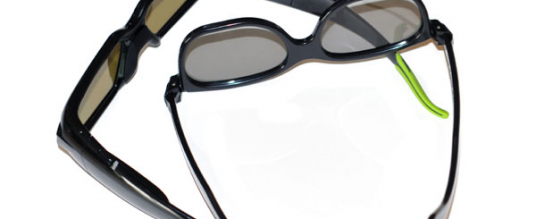Passive vs Active: A match on 3DTV

Via Engadget
New study reveals differences in visual experience between active and passive glasses for 3DTV’s
TCO Development, the company behind the usability and eco label for ICT products, has released the results of a study to compare the visual experience of active shutter eye-glasses or passive FPR (film pattern retarder) eye-glasses technology for viewing 3DTV. The study confirms that the two techniques differ in visual performance characteristics that affect the overall 3D experience.
3D functionality is becoming more common in computer displays, projectors, notebooks and TVs. The growing trend towards 3D display devices for consumers will likely extend to the workplace as well. Within the display industry the merits of active vs passive glasses has been hotly debated for some time. As an independent certification body for displays, TCO Development is in a unique position to evaluate each of these technologies from the viewpoint of the user experience.
The major findings from the study include:
1. Angular dependent cross-talk
The cross-talk (also known as « image ghosting » or « image doubling ») was measured since it refers to the incomplete isolation of the left and right image channels so that one leaks or bleeds into the other when the screen is viewed from different angles. Measurements were taken up to ±30° in both horizontal and vertical directions.
Cross-talk values for the horizontal direction are low for both types of glasses. However in the vertical direction the passive glasses had higher cross talk values when tilted above ±15°. For a 3DTV that is placed at the correct height or tilted towards the viewer it is unlikely that the viewing angle will be larger than ±15° in the vertical direction. A conclusion however, is that a tilting function and correct placement are more important for a passive eye-glass 3DTV. Keep this in mind as some wall mounts may have limited tilting functionality.
2. Luminance
The centre luminance of white is about 3 times lower on an active eye-glass 3DTV compared to the passive eye-glass 3DTV due to the different transmittance of the eye-glasses. When wearing the eye-glasses the viewer will adapt to the average luminance, which means that the big difference in luminance will not be perceived by the viewer in the same degree. However, higher luminance is considered advantageous for the image quality, but other parameters are also important, e.g. black level, resolution and crosstalk, for the experienced quality of the viewer. This is true for both types of glasses but the active ones are darker than the passive ones.
3. Measured resolution through each eye-glass in 3D mode
The passive eye-glass 3DTV must sacrifice vertical resolution in order to show the images for each eye with different polarization. A passive eye-glass 3DTV with (1920 x 1080) will thus only have a measured resolution in 3D-mode of (1920 x 540) for each eye where an active eye-glass type 3DTV will have (1920 x 1080) for each eye.
Studies suggest that images with the same resolution are perceived in more detail in 3D than in 2D. This means that the perceived detail of watching both (passive 1920 x 540) and (active 1920 x 1080) in 3D will be slightly higher than watching of each eye (passive 1920 x 540) and (active 1920 x 1080).
Niclas Rydell, Product and Certification Director at TCO Development, commented on the study findings: « As a certification body with a long history in the field of visual ergonomics for displays, it is important for TCO Development to evaluate the visual ergonomics of these new technologies and to assess any possible impacts on the user experience. TCO Development will further investigate the need of a TCO Certification for 3D ».
Health aspects of 3D
Viewing artificial 3D is known to cause discomfort for some viewers. This makes it a very interesting area to investigate for TCO Development. However in this first study about 3D no conclusions to the human health have been investigated.






